A Complete Guide to Seven Lakes Trek, Dibang Valley
Exhausted, lungs screaming for oxygen and light-headed from the altitude, we made our way back from the pristine high-altitude turquoise-blue alpine lake. I grasped for my breathe braving the rocky mountains, frequented by long leaps and alternative accent and descents. Occasionally cursing myself for joining a strenuous Seven Lakes trek without much preparation, I stopped every ten steps to be gentle on my aching muscles.
Mesmerized by the picturesque Dinu Lake sandwiched between the mountains, there was no place for regrets.
PIN THE POST TO READ LATER
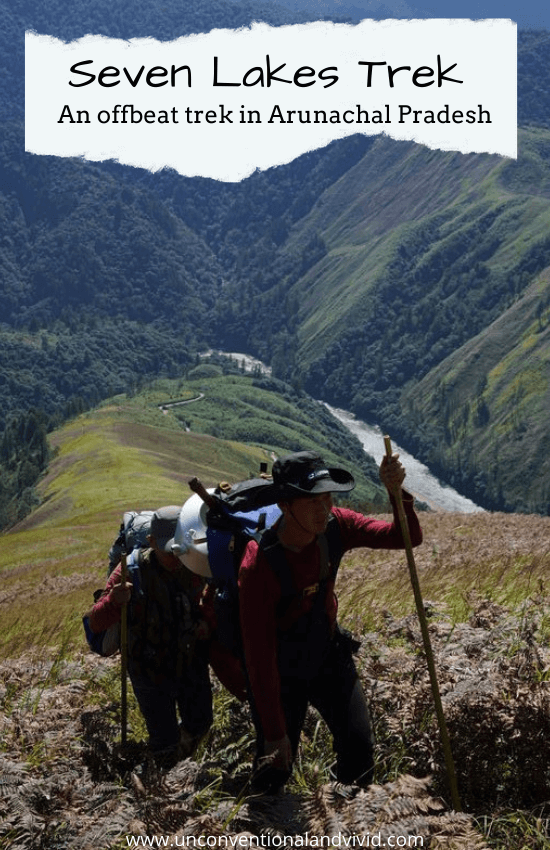
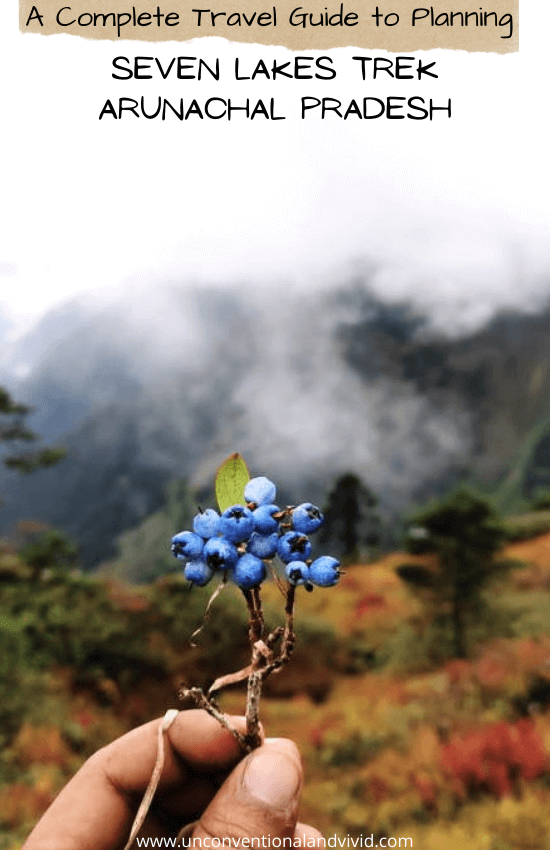
Just when I thought, I haven’t seen anything as stunning as the heavenly landscape of Mishmee hills, nature decided to bestow more. Clouds cleared casting a shade of cobalt blue sky as the last drops of drizzle stopped. As we walked down the hills, a huge rainbow stretched from one mountain to another like a motley bridge over the lake. We all stopped and starred mesmerized, stood over the edge and stared some more. It was an epiphany, just the right feeling of being present in the moment.
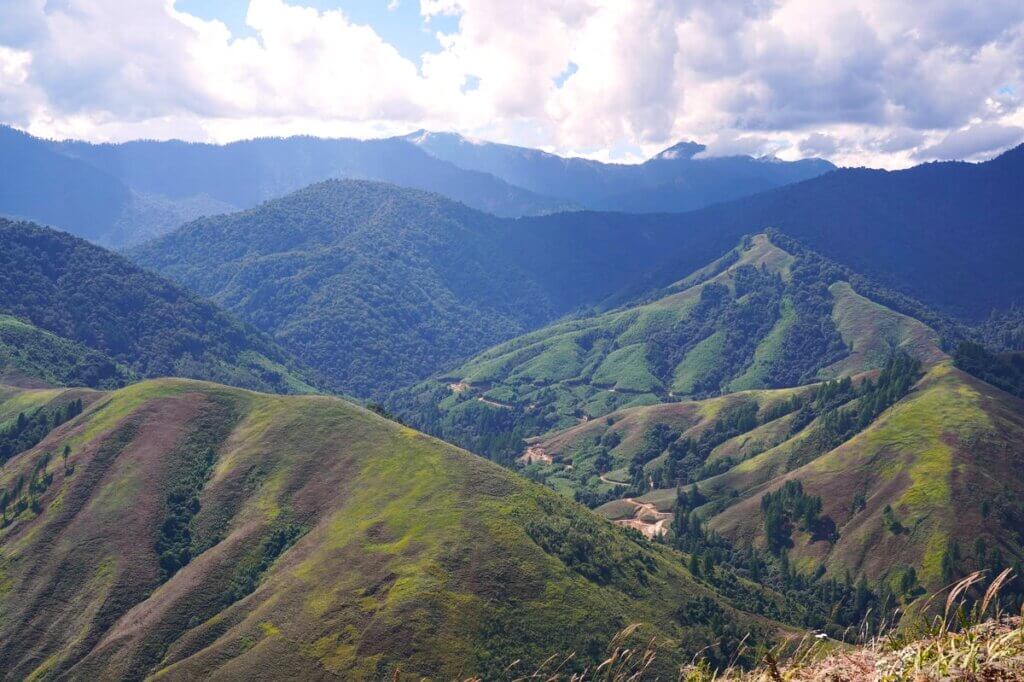
Table of Contents
Seven Lakes Trek – A Journey through Mishmee Hills
Raw, undomesticated, and purely wild – Seven Lakes Trek was a riveting experience bringing together a dozen of emotions on a plate. The landscape changed uncannily teamed with steep ascent and descent. As we traversed across the terrains, every day was a revelation marked by a test of time and mental and physical stamina. Indeed, the highest climbs take you closer to something awe-inspiring but not until you push yourself to be worthy of it. I have never seen nature so benevolently flourishing, co-existing with stories of hunter trails, mystical alpine lake mythologies, and reverence towards Mountain Gods. As we climbed higher, it unfolded not only pristine landscapes transitioning from grasslands to rocky mountains, but gripping folklores passed through generations.
The challenging trek takes you into unchartered territory, previously only followed by local hunters. With the terrain changing every day, a story awaits circling the beliefs and culture of the Idu Mishmi tribe. Tucked in the hinterlands of Arunachal Pradesh, the trek is unlike any regular Himalayan treks. The alpine kerosene blue lakes fuel us with the much-awaited nectar, beholding its gargantuan majesty.
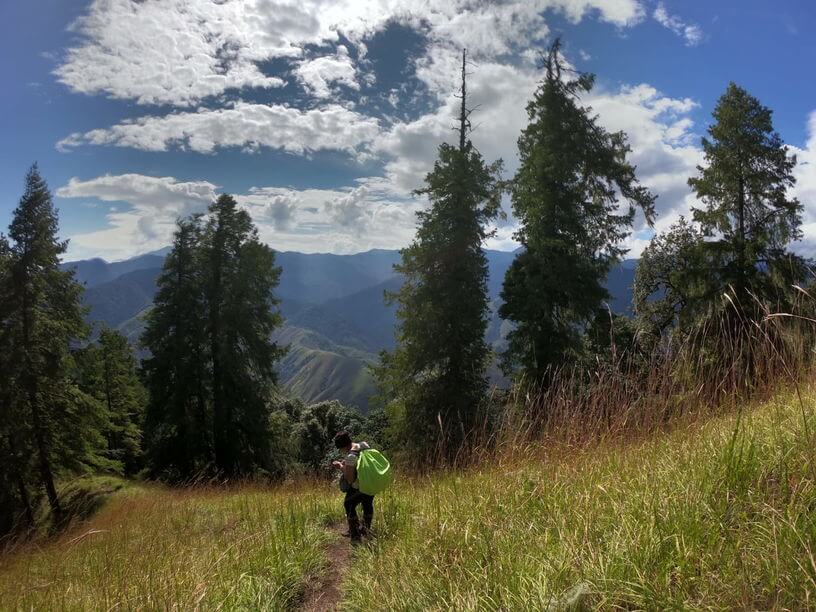
Day Wise Itinerary for Seven Lakes Trek
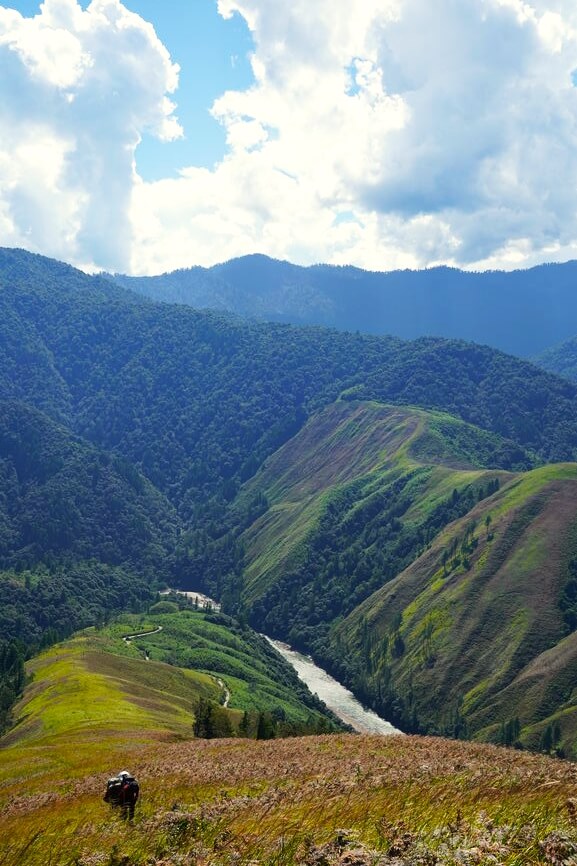
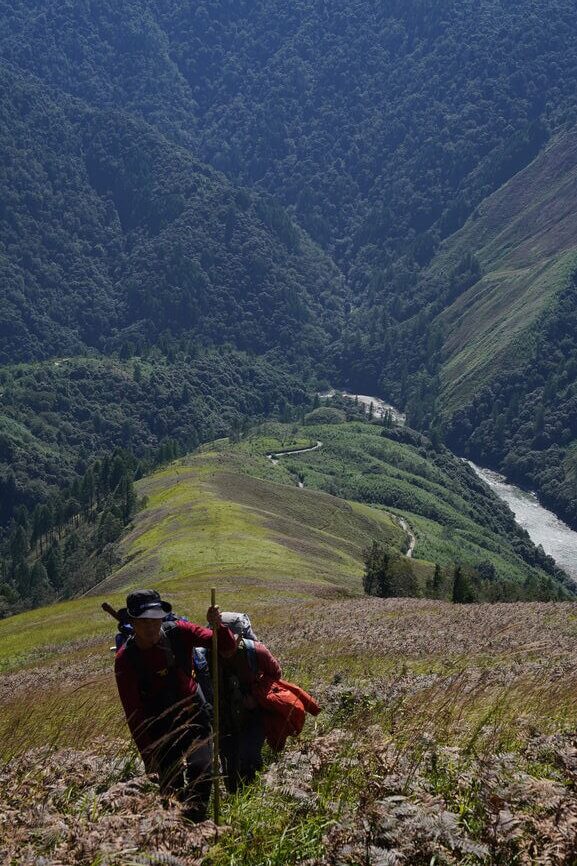
Day – 1 –Hike through Emuli Grasslands
The actual trek starts from Emuli Village, close to a 1hr 30 min drive from Anini town. With the sweltering heat of the high altitude sun and nothing to cast a shade on, it was a steep climb through Emuli grassland. As we trekked up the mountain ridge through the grassland, the breathtaking view of the lush green Mishmee hills compelled us to stop and stare, soak in the beatific feeling despite the scorching heat. A resting point with a terrific view of the mountains awaits halfway through the climb.
Once the grassland climb is over, it transitions into the rainforest with moss-covered trees, flourishing varieties of flora, ubiquitous wild mushrooms, and a layer of mist and fog blanketing the forest. After a sluggish climb, I reached the first camp site – Aniku campsite. The campsite has a log wood hut used as kitchen space as well as accommodate the trekkers. Alternatively, there are tents set by team Emudu Trekkers for accommodating remaining trekkers.
Note: Emuli Grassland is inhabited by a small black fly called Damdum. Make sure to wear full sleeves and apply Odomos while trekking to protect the skin from its bite. I got Damdun kisses all over my hands and it’s super itchy.
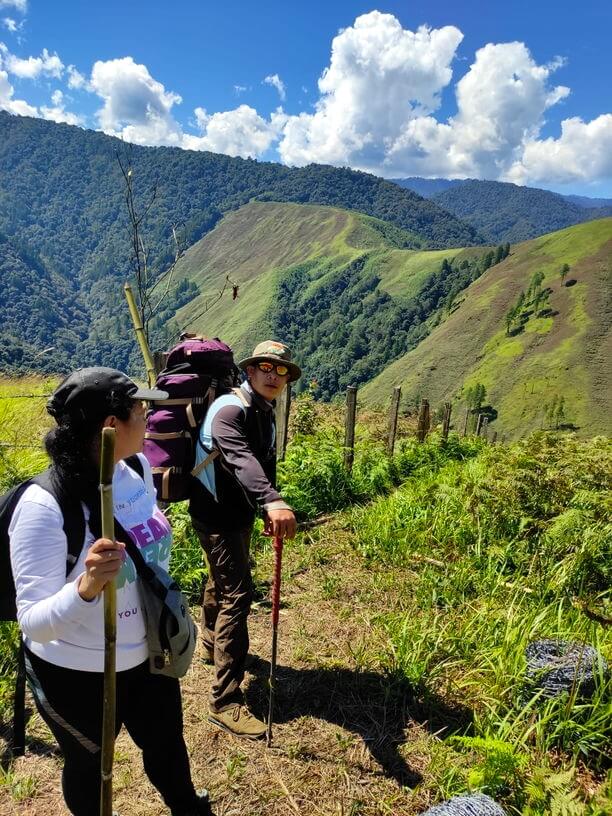
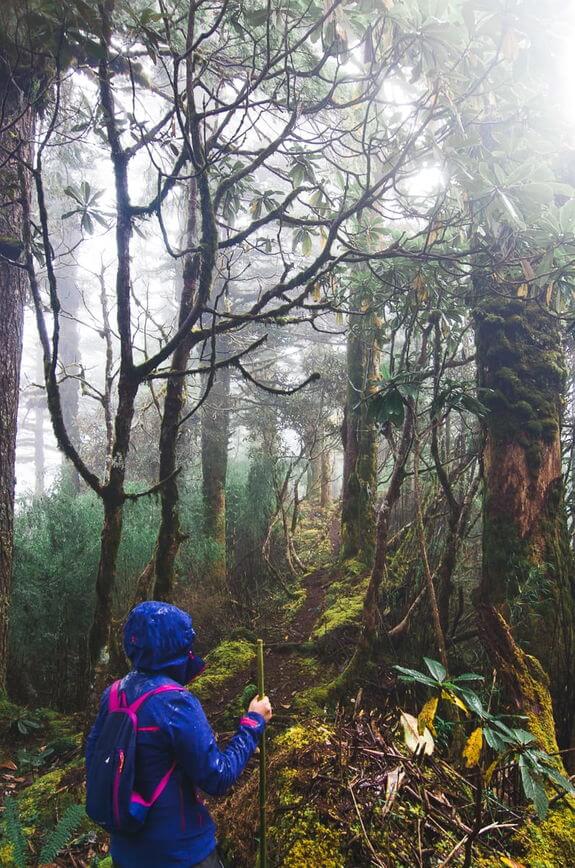
Day – 2 – Trek through Rainforests
Next day is a long walk through slushy, gloomy, and misty rainforests. However, the sound of nature and the sound of the insects throughout the walk is a constant company. It was fascinating to be introduced to a world of medicinal plants throughout the entire trek. Although, the rainforest trek is comparatively smooth but there are steep terrains waiting to be traversed. Being really in bad shape and lack of physical fitness, it took me nearly 8 hours to complete the trek and reach second camp site – Camp Emudu. However, it can be completed within 5 hours for fit trekkers. After a really long trek, a world deep in the forests awaited with the cutest log cabin as home for the night.
PS: Kudos to team of Emudu Trekkers for building a log cabin out of nowhere. The stay is closed to water source making it convenient to use water without having to travel a mile.
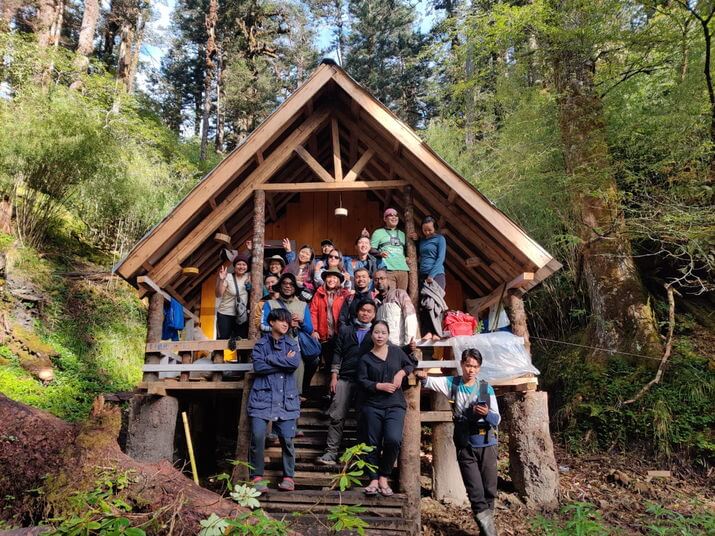
Day -3 – An Extra stay at Camp Emudu
Weather is unpredictable in the mountains. We were hit by the reality that we stand no where when it comes to reasoning with the nature. Realizing the windy situation at camp 3 and the thick blanket of fog along the way, we stayed back one extra night at Camp Emudu. The cosy comfort of the camp was something I was secretly craving for to rejuvenate my aching muscles.
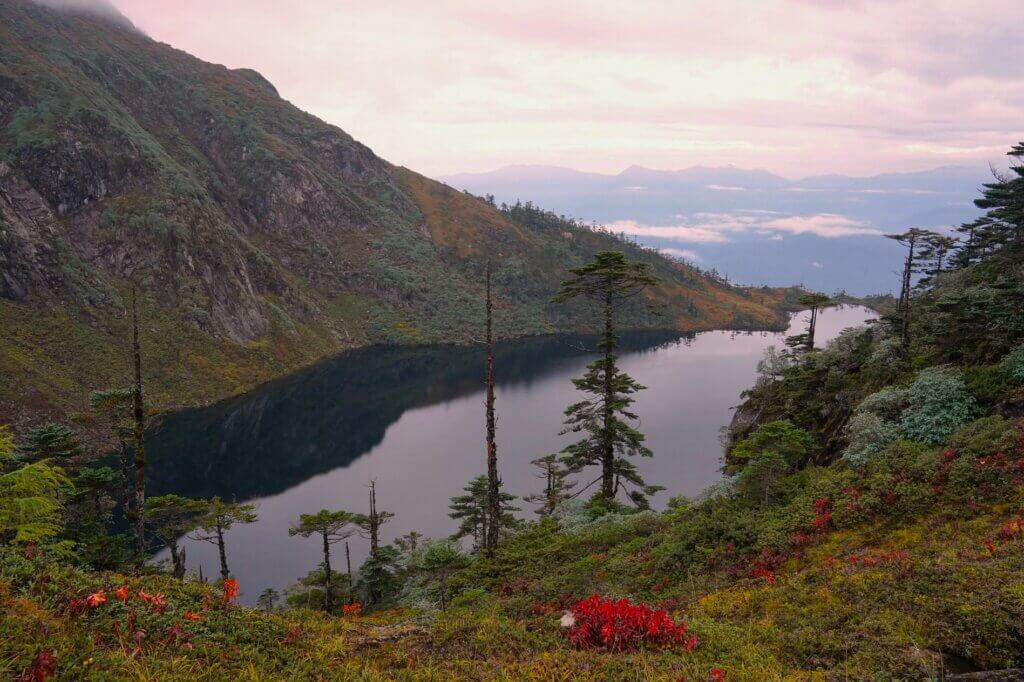
Day 4 – Trek to Camp 3 along 1st lake (Kahmu -yu)
As I was slow and struggled with climbing the rugged, scary terrain, I was informed in prior to prepare myself mentally for the adventure that awaits. Trek to camp 3 was a scary one with uncountable ascents and descents – all steep. This was the first of the seven lakes at camp 3. As we trekked from camp 2 to camp 3, the terrain slowly changed from sloppy forests to rocky mountains. Oh damn! I can feel my legs aching thinking about the rigorous alternate uphill and downhill climb on the rocks. Few spots were pretty intense mercilessly demanding technical skills to climb.
I remember being disgruntled while pushing myself up clinging on to a rope on a 90° rock. After a lot of help and assistance from the kind and ever-patient team members of Emudu trekkers, I managed to reach the camp site, blurred by the fog with scanty glimpse of the lake. Camp 3 was the harshest, freezing to the bones, and eerie.
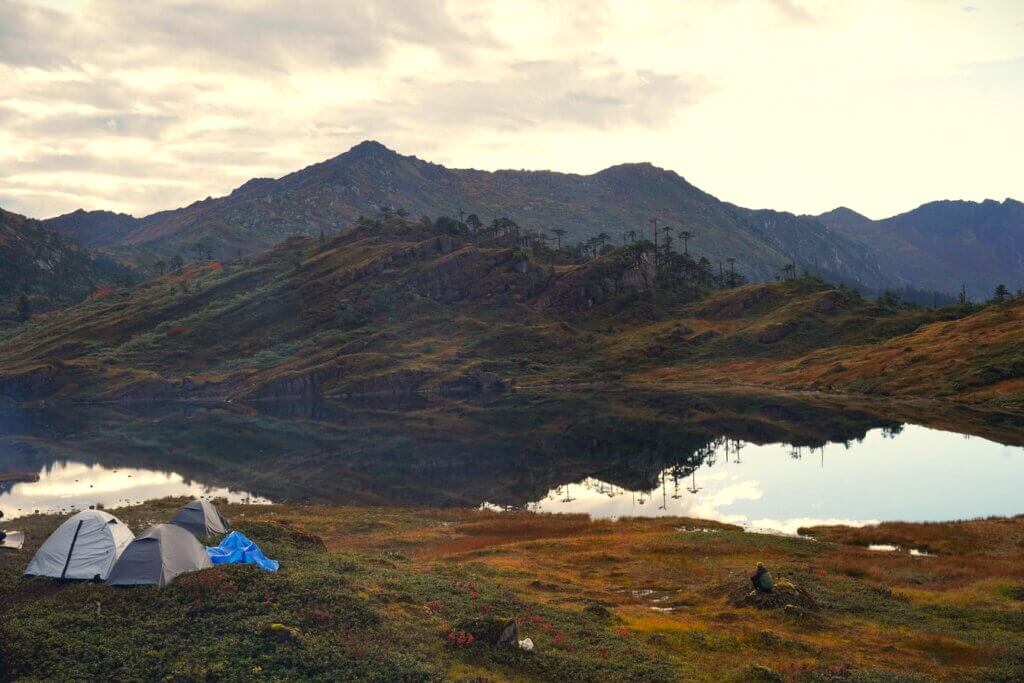
Day 5 – Trek to Camp 4 (Lake 2 – Emuh-ya)
Oh! The trek was the easiest of all days with gentle slopes, rolling hills, and phenomenal view enroute. After nearly an hour of rigorous climb, the bliss of Mishmee hills welcomes you. Oh damn! Camp 4 is adjacent to 2nd lake Emuh-ya Lake and base camp to remaining 5 lakes. The campsite promises abundance of nature in the most generous way – a gurgling waterfall, a narrow crystal clear flowing stream, and the benevolence of the mountains on all sides guarding the site. With the curtain of dusk, the sky lit up with stars, milky ways, and soothing sound of the stream against the silence. The camp was our home under the stars for 3 nights.
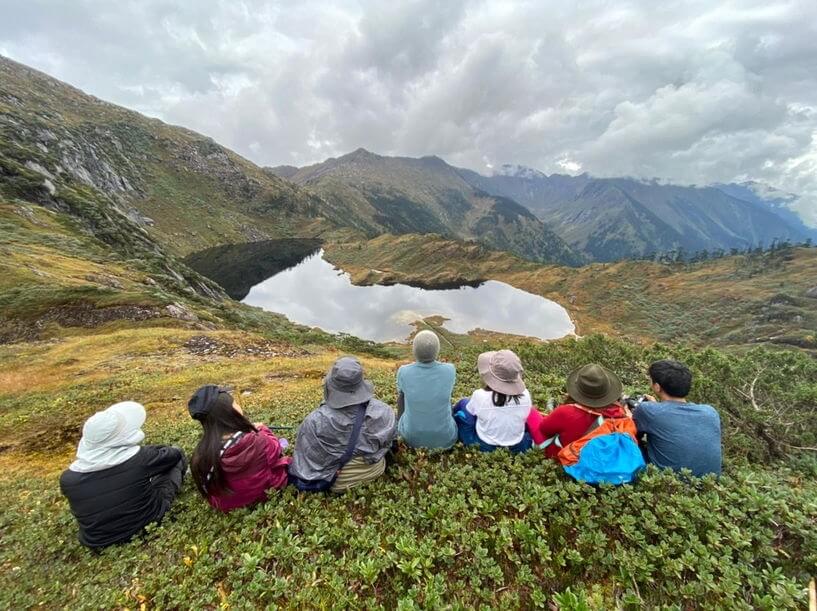
Day 6 – Trek to Lake 3 and 4
After breakfast in the morning, we rolled our excitement and started our hike to the 3rd lake – Koyombo Lake at 13500 ft. It was a breezy 1 hour hike to the lake but cannot deny the thrill of the narrow ridge and the chills it gave me. The route was through mountainous terrain with patches of green spread abundantly. After adoring the 3rd lake for a while, I clumsily made my way to 4th lake – Dinu Lake, also the most gorgeous alpine lake of all.
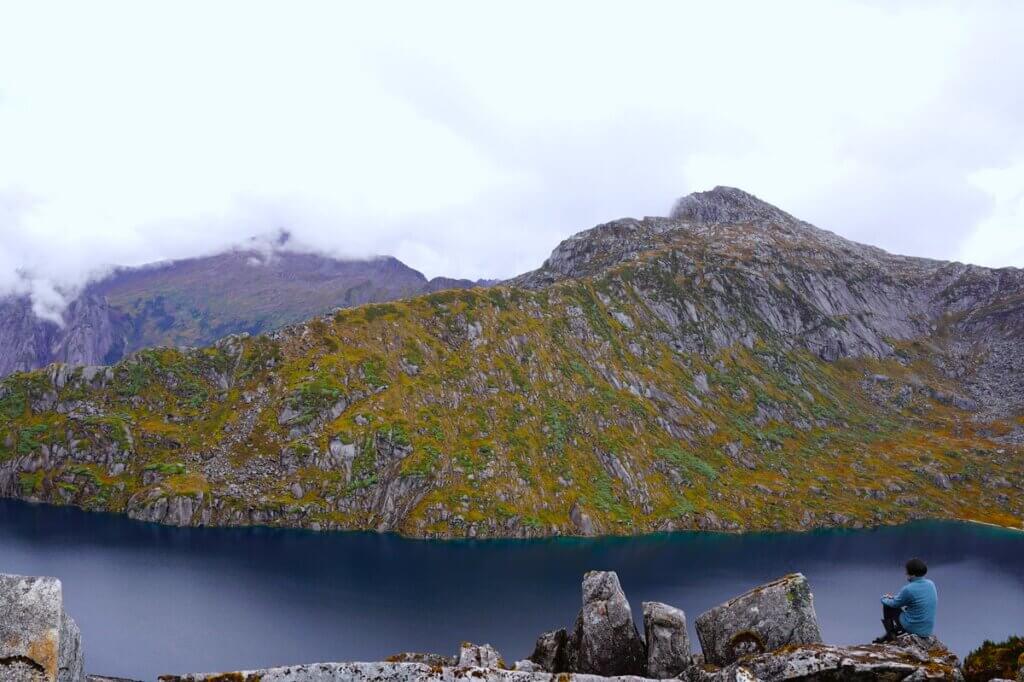
Dinu lake was the maximum altitude gain during the entire trek at 14000 ft. After climbing a few steep slopes, the flora started to fade away baring the terrain into rocky mountains. The rocks naturally adjusted and balanced against each other. After walking across the naked terrain for a while, I stood in front of a dream-like landscape. The blue alpine lake stood still sandwiched between the grey rocky mountains, it was stuff of dreams. After soaking in the views, clicking tons of pictures and creating perennial memories, it was time to descend back to the base camp.
Indeed, the hardest climbs bring the most scenic, untouched landscape!!
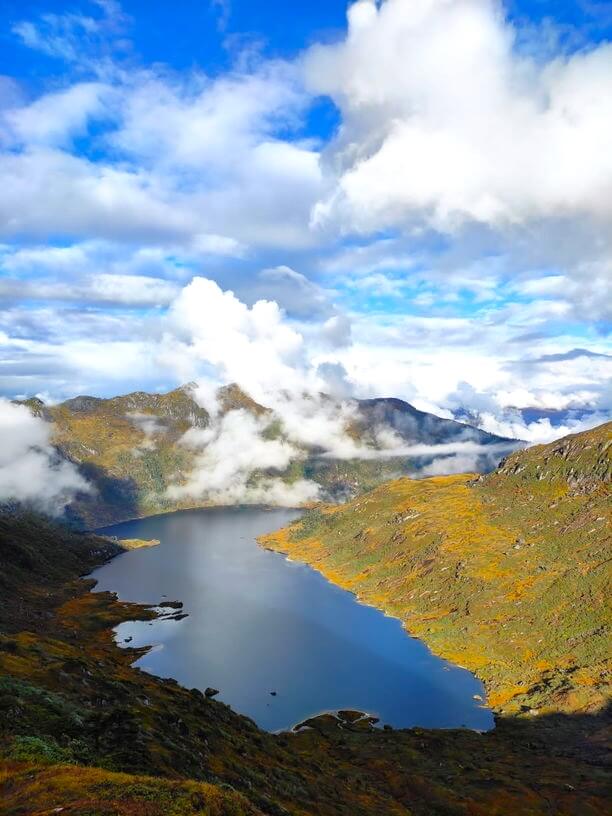
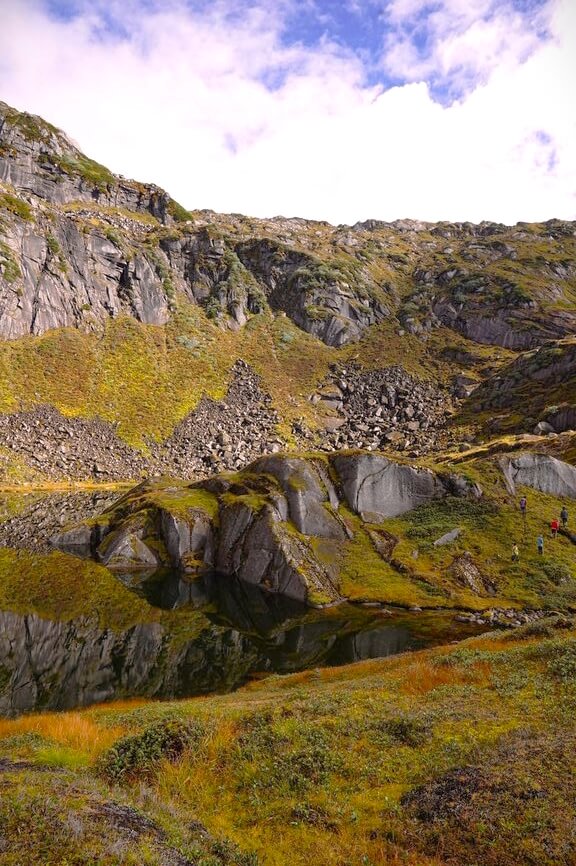
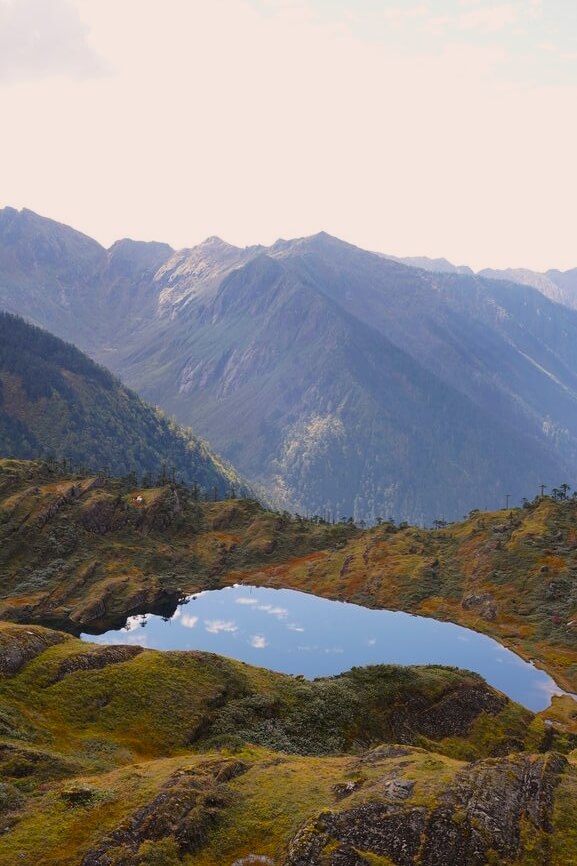
Day 7 – Trek to Lake 5, 6, and 7
Oh! What a hectic day it was! I was warned of the long day of trek that awaits. We started our climb and reached lake 5 (Che – ne Lake). The lake is known to have mystical power. Many hunters who took shelter in the caves and even one of the guides for the trek – Ajadi Rondo, have seen the lake glowing with mystical lights during night during their previous hunting trips.
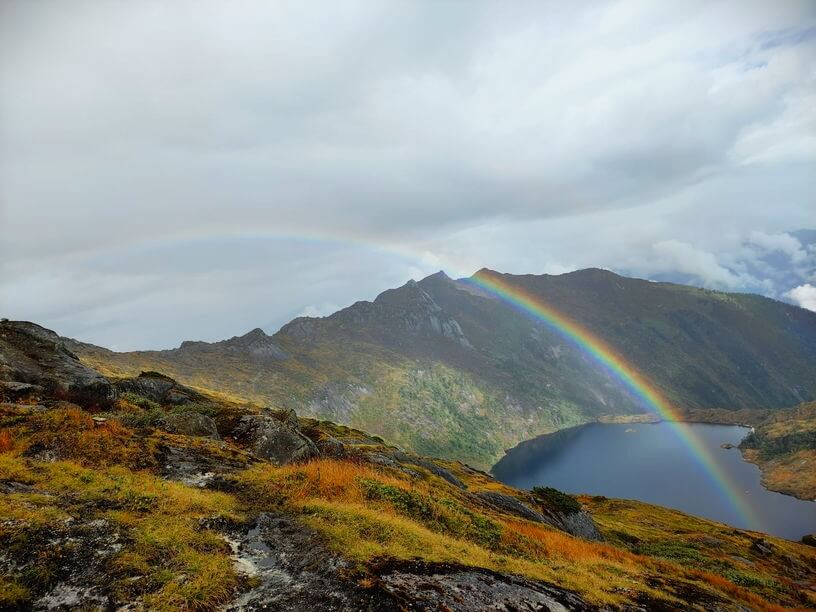
After crossing the mystical alpine lake at 13600 ft, next was to summit the final lakes (Huhu 1 and Huhu 2). Lake 6 flows from crater of one mountains and flows down into another mountain forming lake 7. From the top, both the lakes are visible. After summiting the 6th and 7th, it was quite an emotional moment, something I continue reliving even now. I was happy that somehow, I made it irrespective of the physical difficulties.
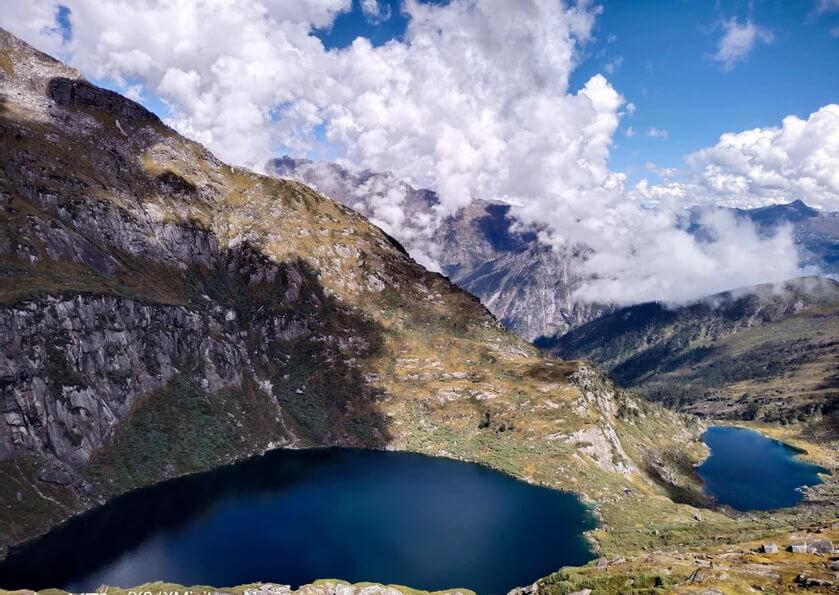
After spending some time, we started descending down along the mountain ridge with the 5th lake in parallel. When we thought nature cannot get more beautiful, the tiny drops of drizzle stops to make way for the sun and a rainbow spread across the lake. Although, for a while, I suffered the perils of mild mountain sickness but it was eventually fine. I reached the campsite just about time before dark.
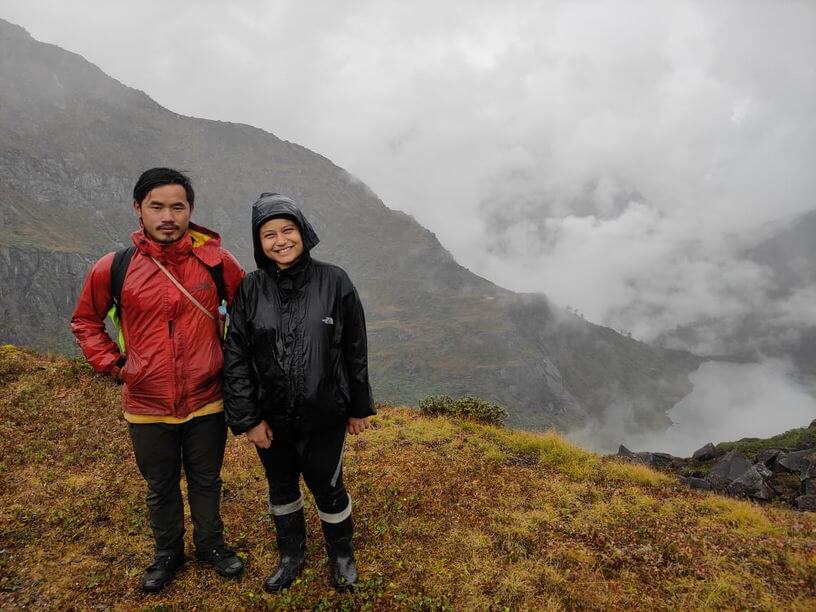
Day 8 – Back to Camp 2
After a hearty breakfast, we started descending down to camp 2 – Yes, the fairytale log cabin. It was a tiresome journey with extensive alternates of steep climb and downward slopes. Honesty, compared to all other days, it was the most exhausting day for me. Somehow battling the rocky mountains and slipping through the slopes, I managed to reach the campsite before it got dark and into the rainforest. Special thanks to Sajni Mipi (guide) for managing to motivate me throughout the journey.
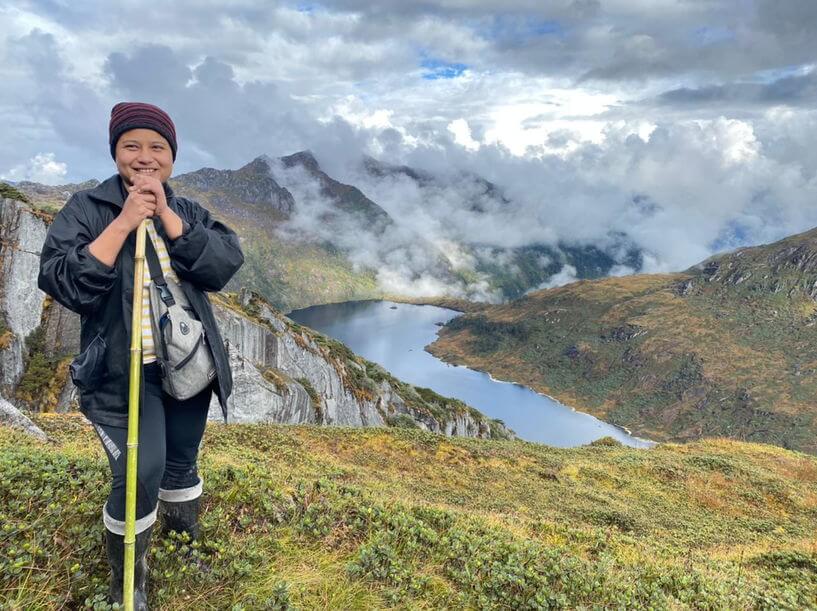
Day 9 – Back to Anini
Oh! I love the last day because it was the easiest, breezy one. After breakfast, we all got ready to move down. It was an easy and smooth walk through the rainforest. One of the trekkers and I were last like always accompanied by Manish Mili (one of the guides). We enjoyed the straight gentle walk through the rainforest, enjoyed to the sounds of nature as well as some music. Although the rainforest part was quite the cakewalk, but the steep slope of Emuli Grassland rubbed the soles of our feet. The extremely steep grassland stinged the toes due to constant pressure applied to retain balance. As we climbed down, the view of the road motivated us to push further and little faster.
As I made it to the road where the cab awaited to transfer us to Anini, I screamed my lungs out. It was a happy, proud, and overwhelming moment. I did it!! I finally made it to Seven Lakes Trek and back.
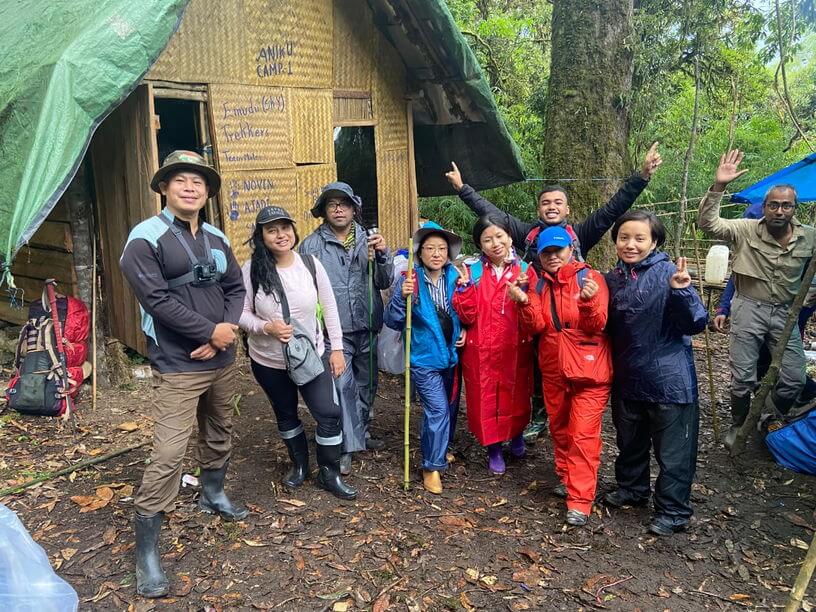
Folklores and stories from the Mountains
The mountains are witness to numerous folklores passed on through generations. The hunters of the Idu Mishmi tribe are ardent believers of mountain God and fear disappointing nature. In the heart of the mountains, stories unfold, whispering folklores and beliefs omnipotent amongst the community. After a long tiring day of trekking, lore and fireplace cuddled perfectly, with the local guides telling stories and some true incidents from the forbidden Mishmee hills.
Story of tadpoles and trekkers
Tadpoles are revered and respected, and anyone disturbing or harmful to the tadpoles during the trek is likely to face the wrath of the mountain God. The guides shared a narrative that a few years back, when the trek was only frequented by hunters and local trekkers, harming the tadpoles cast a bad omen. A group of local trekkers climbed the trail, out of which one enjoyed disturbing or killing tadpoles on the way. Everyone warned not to kill or harm the tadpoles, but the trekker shamelessly glorified his gory against the tadpoles. The narrative says that trekkers were crossing a stream on the way back from the trek, and everyone made it to the other side safely, while the trekker who killed the tadpoles while crossing the stream was swept away by a sudden gush of water.
Mountains teach a lesson if you disrespect
The locals are wary and careful not to disappoint the mountain God. Many beliefs follow the trail. We were told not to take a bath in the 2nd Lake (the only Lake which is accessible) along the 4th camp (base camp for all lakes), as it might fuel the anger of mountain God. It is important to melt into the culture and beliefs of remote terrain in a different land. Our guides shared stories of how it suddenly stormed and rained heavily after a few trekkers shouted and created an uproar in the name of enjoyment. No matter what, we were asked to respect nature and keep it low, avoiding creating any nuisance during the trek or at the campsite.
Story of two frogs and a hunter
The lore says the Mishmee hills are protected by the mountain God in the form of a frog. One of the folklores believed by the Idu tribe is about a hunter who was protected by the mountain God. Centuries back, a hunter saw two frogs fighting and interrupted the fight. One of the frogs was injured and was nursed back to health by the hunter. In pursuit of getting some good catch from hunting, the hunter took shelter in the caves.
He would go out to hunt during the night and come back to the cave to find freshly cooked food waiting for him. After the same incident was repeated, he hid behind a rock to see who had left behind the food. He found a woman leaving behind food and questioned her goodness towards him. It was revealed that she was the daughter of the Mountain God (the injured frog), who was nursed and taken care of by the hunter.
There are hundreds of stories and folklores from the forbidden highlands of Mishmee hills. The belief in the power of spiritual existence, reverence towards nature, and practice of animism have managed to connect the tribe through common roots.
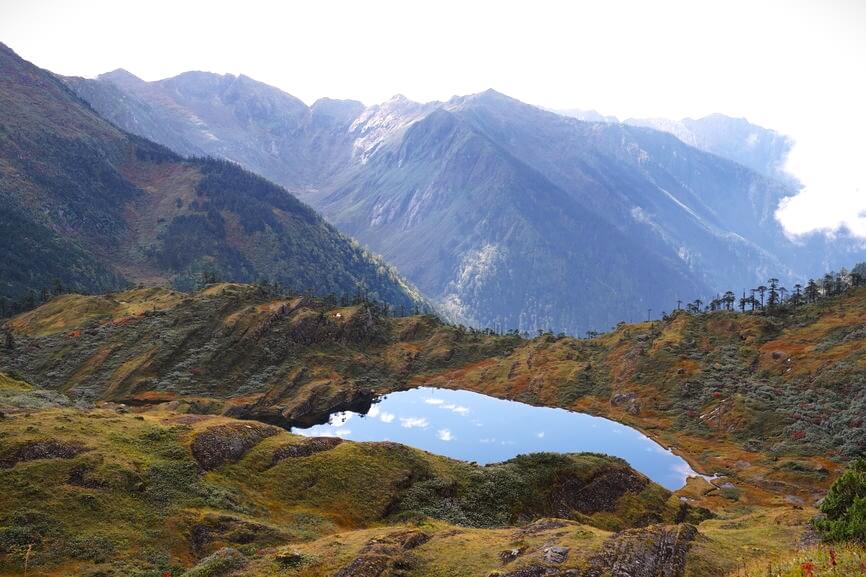
What are the Trek Essentials?
The trek and terrain are unlike regular Himalayan treks. Although it is a moderate – difficult level trek, it requires preparation, stamina, and endurance. Also, packing the essentials for the Seven Lakes trek is an important requirement.
- Gumboot – This is a must because the terrains are extremely slushy and muddy. The regular trekking shoes do not work.
- Odomos – It is a must to keep off the Damdims
- Raincoat – Two-piece raincoat (avoid Ponchos as it is difficult to manage walking wearing a poncho in the terrain)
- Full sleeve T-shirts/Trek pants
- Tiffin/Mug
For a complete list of items, connect with the team of Emudu Trekkers.
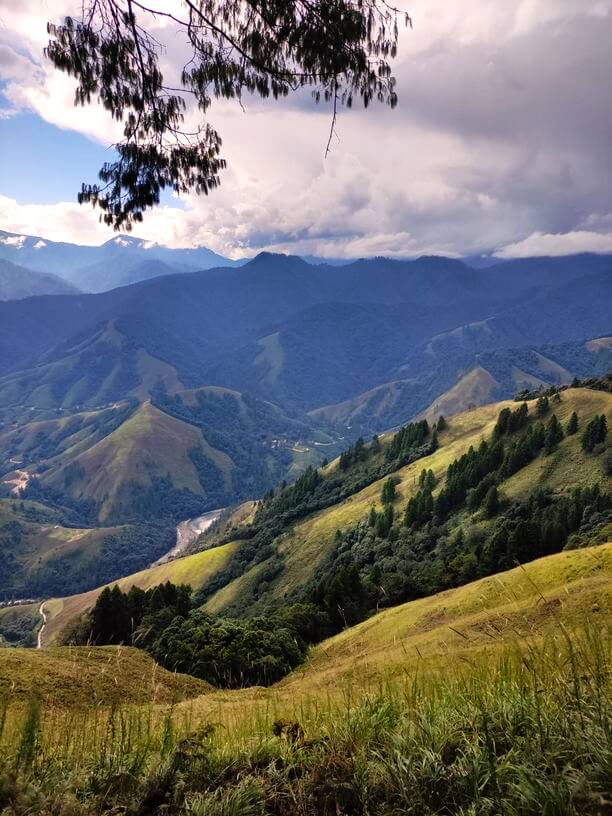
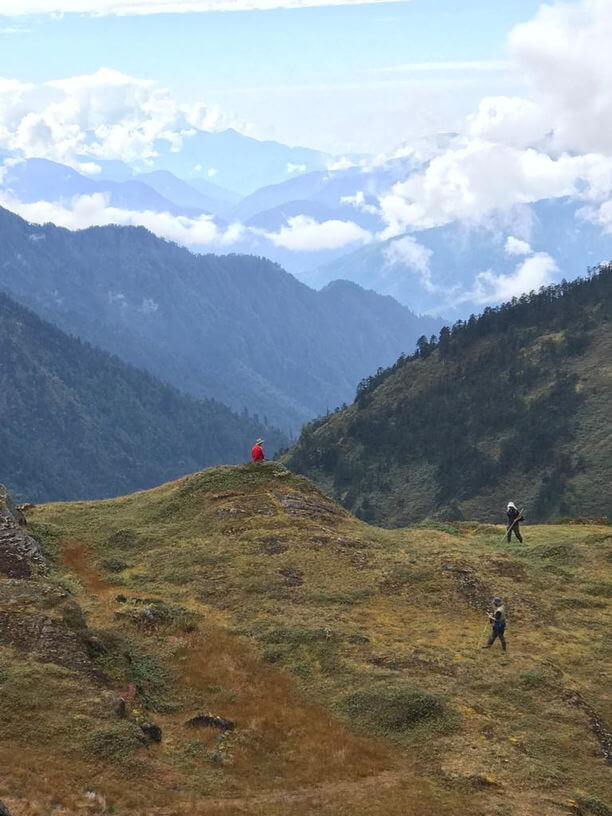
How to Book Seven Lakes Trek?
The only trekking organization that conducts the Seven Lakes Trek in Dibang Valley is Emudu Trekkers. The team of 6 founders are the point of contact. For booking and trek schedule, contact Jimu Mele at 7085917932. You can find more information about the trek, scheduled dates, and booking through their Instagram page – Emudutrekkers.
It is sometimes difficult to contact the organizers due to poor signal connectivity in Anini.
Read the complete blog on Anini to know more about reaching the trekking base.
Want to plan Seven Lakes Trek, Dibang Valley? PIN THE POST
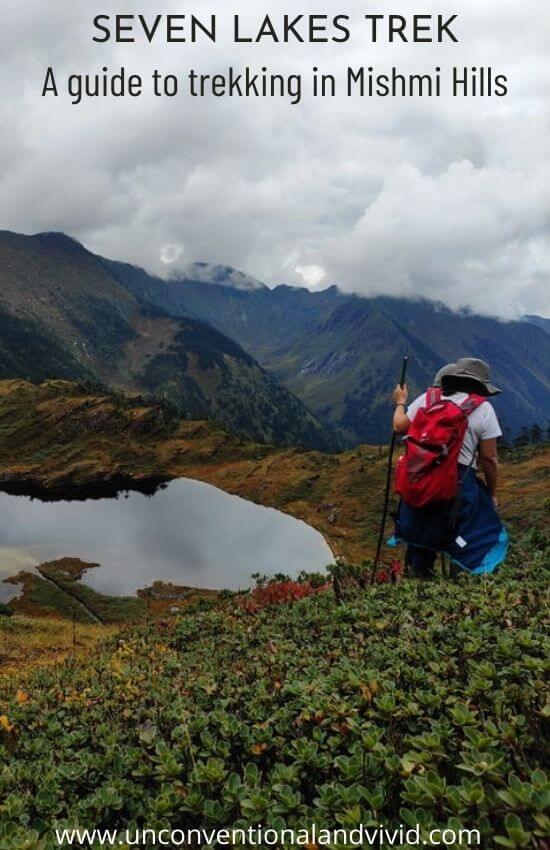
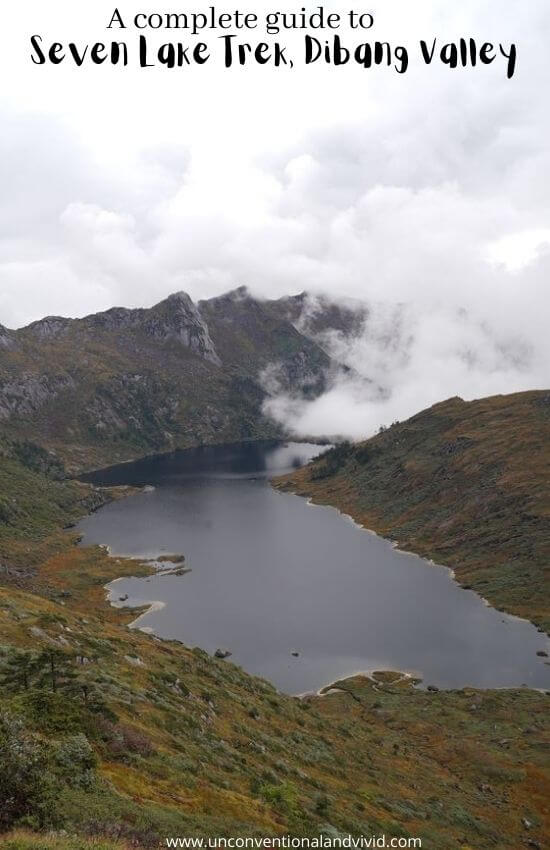

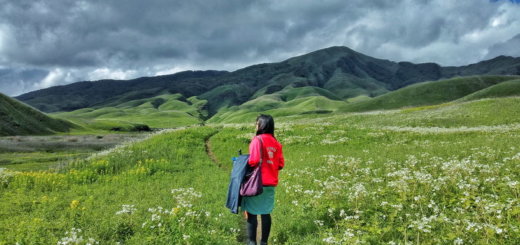
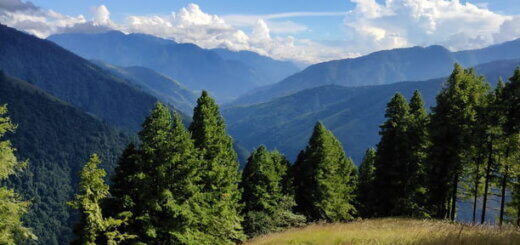
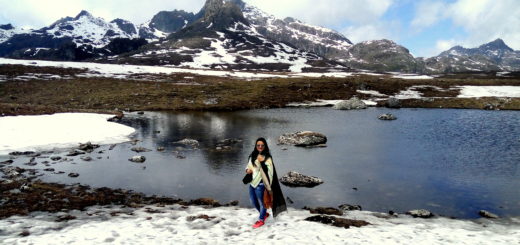

Wow. That was a big-ass holiday and I am jealous now. Loved the pictures and the post.
Thanks a lot! Indeed, it is one of a kind place. Do plan 🙂
Hello Upasana! What time of the year did you do this?
Hey! I did it in the month of October.